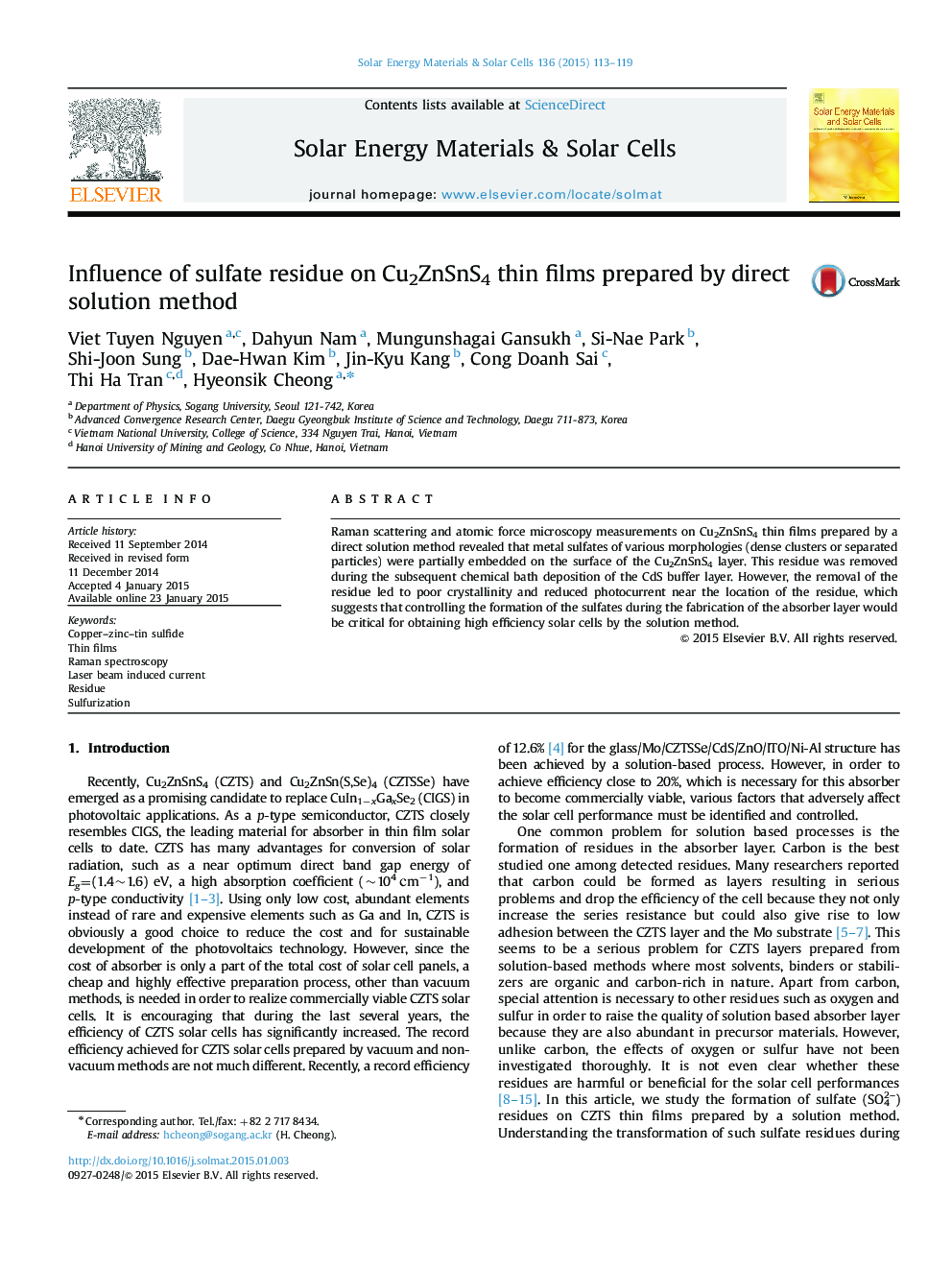| کد مقاله | کد نشریه | سال انتشار | مقاله انگلیسی | نسخه تمام متن |
|---|---|---|---|---|
| 77826 | 49306 | 2015 | 7 صفحه PDF | دانلود رایگان |

highlights
• We discovered sulfate residue on Cu2ZnSnS4 prepared by the solution method.
• The chemical bath deposition (CBD) of CdS removes the residue but degrades the absorber layer.
• Photocurrent is reduced in regions where residues were removed during CBD.
Raman scattering and atomic force microscopy measurements on Cu2ZnSnS4 thin films prepared by a direct solution method revealed that metal sulfates of various morphologies (dense clusters or separated particles) were partially embedded on the surface of the Cu2ZnSnS4 layer. This residue was removed during the subsequent chemical bath deposition of the CdS buffer layer. However, the removal of the residue led to poor crystallinity and reduced photocurrent near the location of the residue, which suggests that controlling the formation of the sulfates during the fabrication of the absorber layer would be critical for obtaining high efficiency solar cells by the solution method.
Journal: Solar Energy Materials and Solar Cells - Volume 136, May 2015, Pages 113–119